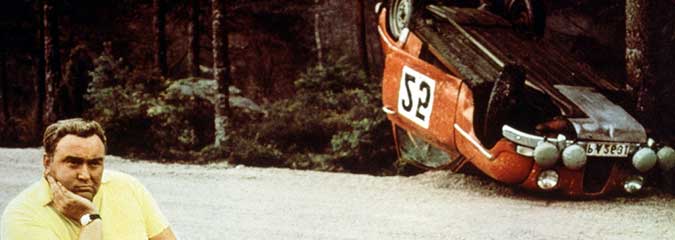
Road Traffic Accidents
There’s no denying the fact that travelling by road – whether via car, motorbike, bike or even as a pedestrian – is safer than it’s ever been, thanks to technological advances in the safety of motor vehicles and higher standards of driver education. Equally, there’s no such thing as guaranteed safety since, no matter how careful you as a driver or pedestrian may be, there’s no way of completely protecting yourself from the irresponsible behaviour of other road users. Whilst the overall number of road traffic accidents (RTA) is on a downward trend, the statistics can still make for shocking reading. According to the latest set of figures released by the Department of Transport, whilst the number of road deaths in 2013 dropped by 12% on a year-by-year comparison, this still meant that 1,713 people were killed in RTA’s. Other shocking facts included:
- 183,670 total RTA casualties.
- 21,657 people seriously injured.
- 138,660 accidents involving personal injury reported to the police.
As stated, these figures are gradually coming down, and many of the individual figures are actually the lowest since records began, but that doesn’t detract in any way from the impact which an RTA can have on the individual or individuals involved. The very nature of travel on the road – the speed and size of the vehicles for example – means that accidents are likely to have a devastating impact on the people caught up in them.
Even a relatively low speed impact can cause a condition such as whiplash, something which is actually more serious and debilitating than its somewhat frivolous image would suggest, whilst more serious accidents can cause serious injury, psychological trauma, amputation, paralysis and even death. If an accident of this kind is simply that, an accident pure and simple, then the only thing to be done is write it off as bad luck and try to get on with your life, but if the incident was caused by the negligence of another party – a fellow road user driving without due care and attention, perhaps, or an avoidable mechanical failure – then you have been injured thanks to this negligence and have every right to pursue compensation.
It has to be remembered that seeking compensation of this kind isn’t simply ‘cashing in’, as is sometimes portrayed, since a serious or even relatively minor injury can have a massive impact on the rest of your life. Leaving aside the pain, suffering and distress, there is the fact that your earning power might be curtailed, along with your social life and ability to pursue hobbies and interests. Add this to the direct expenses such an injury will involve, in the form of travel expenses, medical fees and anything else which wouldn’t have arisen were it not for the accident, and it’s only right that the person responsible should be charged with ensuring you’re not out of pocket.
Claiming compensation will not only ensure financial recompense, it will also provide the first step towards piecing your life back together again, providing an equable antidote to the unfairness of suffering through another party’s negligence.
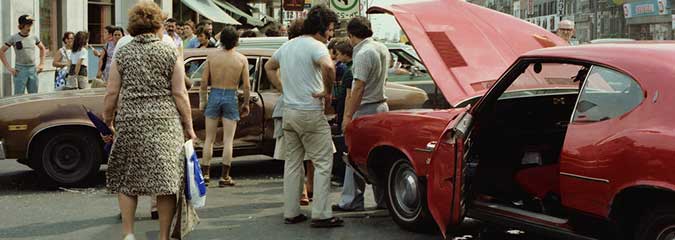
After an RTA
In the immediate aftermath of an RTA, the last thing you’re probably thinking about is compensation. The fact of the matter, however, is that speed is of the essence for two reasons.
Firstly, as is the case with most other personal injury claims, there is a three year time limit following the accident after which a claim can’t be launched. The other factor which means speed is of the essence is that building the strongest possible case is the key to successfully seeking compensation, and the immediate aftermath of an accident is a key moment, when facts are fresh in your memory, the scene of the incident remains intact and witnesses and other parties are still present.
The steps to take following an RTA run as follows:
1) Check the condition of everyone involved. Even if you, or they, feel unhurt, it is vital to seek medical help at the earliest possible opportunity. Not only will this ensure that you receive any treatment that is needed, but it will also start the process of building a paper trail of evidence to build your claim around. A successful claim consists of demonstrating that you’ve been injured in an RTA, and demonstrating that the accident in question was the fault of another party, and the more evidence you can gather in both respects, the better.
2) The police – section 170 of the Road Traffic Act 1988 lays out the specific circumstances under which there is a legal obligation to inform the police of an RTA. These are:
- If someone has been injured.
- If damage has been caused and the other party left the scene.
- If the other party stayed but names and addresses were not exchanged.
In all circumstances, however, a police report represents another piece of paperwork helping to build the strongest possible case. If the police do not attend, Form 207 can be downloaded and filled in, allowing for self-reporting of an accident, provided it is handed in to the police within 24 hours.
The next stage of a successful compensation claim involves the gathering of evidence detailing the precise circumstances of the accident and demonstrating that the other party was to blame. Many cases are fairly simple (failure to stop at a red light, for example) and often the other party will admit blame and settle without the need for any action, but if responsibility is disputed, then the more information you can present, the better.
In the immediate aftermath of an accident try to take photographs using your phone. If this is not possible, sketch the details, including the layout of the road, the position and direction of travel of any vehicles and the placement of any witnesses, whilst it is all still fresh in your mind. Other steps to take include:
- Taking the names and addresses of everyone involved, and jotting down relevant number plates for future reference and insurance against false details being given.
- Taking down the details of any witnesses.
- Keeping any receipts related to the accident. If you need to take a taxi home from hospital, for example, then this is an expense which can form part of your claim.
It may be that the scene of the crash is covered by a CCTV camera which captured events. If this is the case, then you have a legal right to ask for access to the footage (http://www.gov.uk/request-cctv-footage-of-yourself), with the owner of the camera legally obliged to hand it over within 40 days. In simple terms, the more information you can gather together, the better your chance of winning compensation.
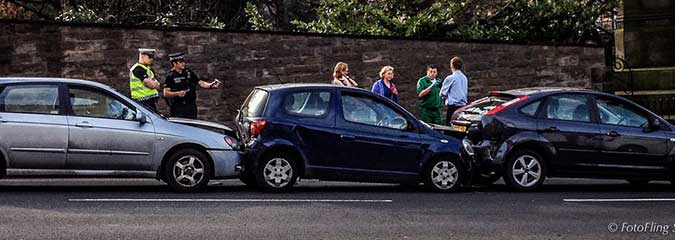
Car Accidents
Whilst the issue of personal injury compensation for road users covers all vehicles and pedestrians, by far the vast majority of RTA injuries feature cars. According to the Department for Transport, the latest figures for injuries involving the occupants of cars are as follows:
- 785 fatalities
- 7,641 serious injuries
- 109,787 reported casualties
Once again, whilst all of these numbers demonstrate a year on year drop, for each individual involved the accident will have been deeply traumatic. Whilst the third party in the vast majority of such accidents is a fellow car user, there are circumstances in which it might be the party responsible for the safe upkeep of the vehicle, or the local authority charged with maintaining a safe driving surface.
If the accident is caused by a mechanical failure which could have been reasonably avoided (i.e. one brought about by an intrinsic fault in the vehicle which the manufacturer ought to have spotted) then you have been the victim of negligence, as is also the case if your car loses control on a road surface which has been allowed to deteriorate dangerously. Whatever the cause, the basic foundations of the case – demonstrating injury and demonstrating negligence – remain the same. Under the auspices of the Highways Act 1980, the responsibility for maintaining public roads in the UK rests with the relevant Highway Authority.

Motorbikes
Whilst, at first glance, the figures may tend to indicate that motorcyclists are involved in fewer accidents than car drivers, this is only because of the relatively lower number of motorbikes on the road. When the respective volume of car and motorbike traffic is taken into account, it can be seen that riding a motorbike is much more dangerous than driving a car:
- Per mile travelled, motorcyclists are 38 times more likely to be killed in an RTA than the occupants of cars.
- During 2013, 331 motorcyclists were killed in RTAs, whilst 4,886 were seriously injured.
- Every day, 30 motorcyclists are killed or injured at road junctions.
The reasons are clear – the relatively exposed and fragile nature of a motorbike makes it vulnerable to impact from other vehicles whilst, if such an impact does take place, the absence of safety features such as seatbelts, airbags and crumple zones leaves the motorcyclist extremely vulnerable to serious injury.
Whilst wearing the right clothing, such as a helmet and protective gloves, jacket, boots and trousers, can help to minimise injury, as can riding with a careful allowance of other road users’ tendency to ‘overlook’ motorbikes, it’s still vital to be aware of the fact that you have every right to seek compensation if you’re knocked off your bike due to the negligence of another road user.

Cyclists
Riding a bicycle is to be recommended on many grounds – it saves money on transport costs, is good for your health and is also environmentally beneficial. As more and more traffic hits the roads, however, it can also be a dangerous option. According to the Department for Transport, the number of licensed motor vehicles on the road in 2013 rose by 1.5% on the previous year to 35 million, and this is a number which has risen virtually every year since 1945.
Amongst all of this traffic the average cyclist is extremely vulnerable, and it’s vital that cyclists wear the right safety equipment and ride in a manner which maximises their chances of remaining safe – staying clear of the gutter, maintaining eye contact with other road users, wearing highly visible clothing, giving clear hand signals and obeying the rules of the road.
Despite your own best efforts, however, the tendency of other road users to sometimes behave in a careless manner towards cyclists can lead to accidents, and when these accidents take place, the disparity between a bicycle and a motor vehicle means that the cyclist often ends up suffering injury.
In 2013, 109 cyclists were killed on the road, whilst 3,143 were seriously injured and the total number of casualties came in at 19,438 (https://www.gov.uk/government/uploads/system/uploads/attachment_data/file/324580/rrcgb-main-results-2013.pdf). In every single one of these cases, if another party have behaved negligently and caused the accident, then the cyclist would have been eligible to make a claim for compensation. This might mean claiming for the cost of having their bicycle repaired, or it could involve seeking recompense for a lifetime of pain, disability and expense, or even the loss of a loved one. No matter where along the spectrum of seriousness the injury falls, it’s only right that the party whose mistake caused it should be the one paying the price.
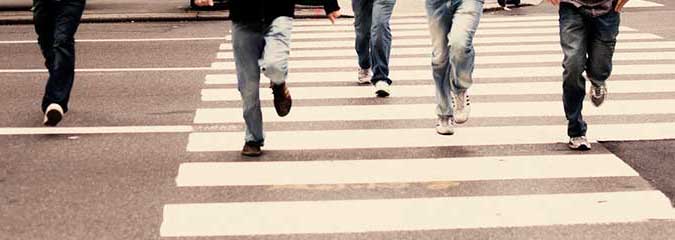
Pedestrians
Most people who drive a car generally accept the level of danger inherent in taking to the road, on the basis of the fact that modern motor vehicles have built in safety features such as air bags and the notion that the driver of a vehicle has a large degree of control over their own safety. The same cannot be said, to the same degree, of pedestrians, whose safety is much more at the mercy of other road users.
No matter how careful you are when crossing the road, for example, it’s impossible to ever fully allow for a driver who is busy answering their mobile phone or is driving at too high a speed to brake in time. The figures bear out this risk, with pedestrians accounting for 23% of those killed in reported accidents during 2013. Whilst the figures are reducing in general, the numbers for 2013 are still disturbing:
- 398 pedestrians were killed.
- 4998 were seriously injured.
- Pedestrian casualties totalled 24,033.
Allied to this is the fact that a pedestrian involved in an accident with a motor vehicle is simply bound to come off worse and to suffer injuries far more serious than those of the occupants of a vehicle. This is why it’s imperative that anyone involved in such an accident should feel themselves able to make a claim for compensation, not only to make up, in a small way, for any injuries they have suffered, but also to ensure that the negligence of another party doesn’t result in them suffering financially.

Public Transport
Just like any business which deals with members of the public, those which provide public transport – whether in the form of a bus, taxi, train or tram – have a duty of care to protect their customers and keep them free from injury. If you are involved in an accident whilst using public transport and suffer an injury, then you may well be in a position to make a claim for compensation.
Whether the driver of the vehicle involved or another road user was ultimately responsible for the accident will be something which emerges as the case unfolds, but even if the driver of another vehicle was to blame, an injured person would initially claim against the service provider, and they would then be free to make a counter claim against the other driver. As this demonstrates, public transport compensation claims can be more complex than others, but the basic principle underpinning them is the same – you put your trust in another party, and ended up suffering an injury because they were negligent. Since this is the case, you have every right to seek compensation.
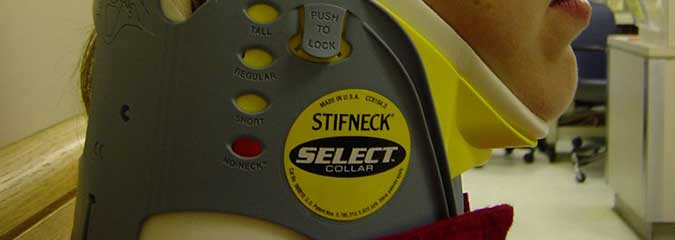
Whiplash/Neck Injuries
The condition of whiplash has gained something of a bad reputation in the past few years, frequently being used as a lazy shorthand for the so called ‘compensation culture’ by people who have presumably never suffered what can be a painful and debilitating condition. In truth, whiplash can cause stiffness, pain and loss of sensation in the neck and, in more serious cases, can lead on to muscle spasms, headaches and pains in the neck and shoulders.
Whiplash is caused by a sudden jerking back and forth of the head, such as that which occurs when slamming the brakes on in a car or being hit by a vehicle from behind. Whilst whiplash can be caused by accidents such as a fall, the vast majority of cases occur in road traffic accidents, and can arise even when the vehicles involved were travelling at relatively low speed. The symptoms of whiplash may take some time to become apparent, up to six to twelve hours, which is why it is imperative to seek medical attention as soon as possible in the event of being involved in an RTA. If whiplash becomes a long term, or chronic condition, it can lead to psychological symptoms such as depression and anxiety. (Source: http://www.nhs.uk/Conditions/Whiplash/Pages/Symptoms.aspx)
Taking all this together, it’s clear that whiplash has the potential to be a serious condition wreaking havoc upon the life, working and social, of any victim. That’s why those afflicted as a result of someone else’s negligence can make a claim for personal injury compensation.
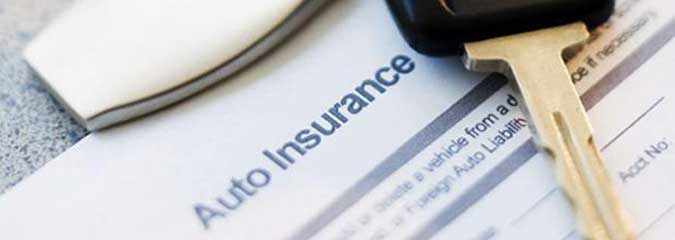
Uninsured Drivers and the MIB
Most drivers in the UK take to the road with two thoughts in mind. The first is that accidents, in relation to the volume of traffic, are fairly rare, and the second is that, in the event of an accident, the other driver will have motor insurance which will help to facilitate a compensation claim .The sad fact, however, is that some people take to the road without the right insurance, and if these people are responsible for causing accidents then other approaches have to be taken.
By its’ very nature, the scale of a problem like uninsured drivers is difficult to pin down precisely, but in 2013 it was revealed that no fewer than 226,803 UK drivers have points on their licence having been caught driving without insurance.
If you’re involved in an accident which was caused by an uninsured driver, or with a driver who leaves the scene without exchanging details, then there is a mechanism in place via which you can pursue a claim for compensation. The Motor Insurers Bureau (MIB) is an independent body created by the government in 1946 and funded by the rest of the UK motor insurance industry. In the event of a personal injury caused by the negligence of an uninsured driver, any claim for compensation will be handled and ultimately met by the MIB.
For more details, see http://www.mib.org.uk/Home/en/default.htm

Claims Portal
Since 2010, claims for injuries in RTAs which have a value of £25,000 or less are processed through the Claims Portal, an online electronic interface set up by the Ministry of Justice.
The portal will allow your injury solicitor to input all of the details of your case in a manner which is quick, efficient and secure, helping to speed up communication and the sharing of information. It is hoped that the portal will deal with uncontested claims much more quickly than the Court system, thus saving the claimant time and money.
Whilst the other party may at first deny any liability, the prospect of having to contest a clear cut case will often lead to an offer to settle, and will have the added plus point of helping to cultivate and encourage safer driving in the future.
Although all cases are processed on a no win no fee basis, some costs could be payable under certain circumstances. Any costs would be fully explained upfront by your solicitor before you decide to proceed with your claim. Termination fees may apply based on time spent on your case, or in situations such as: lack of cooperation, deliberately misleading your solicitor, failing to attend scheduled medical or expert examinations, or not appearing at a required court hearing.
By submitting your details into the contact forms provided, you agree to be contacted by National Accident Helpline (a brand of National Accident Law, a firm of personal injury solicitors regulated by the Solicitors Regulation Authority) to discuss your claim.
NoWinNoFee.org is a trading name of Colour Ventures Ltd. Colour Ventures Ltd is regulated by the Financial Conduct Authority in respect of regulated claims management activities. Registration is recorded on the website https://register.fca.org.uk
Colour Ventures Ltd registered office address: Flannigan Edmonds Bannon, Linenhall Exchange, 1st Floor, 26 Linenhall Street, Belfast, BT2 8BG. Company registration number: NI070913



